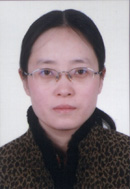|
1. Yang Yang, Hong-Yan Bi*, Zhi-Ying Long, Sha Tao (2013). Evidence for cerebellar dysfunction in Chinese children with developmental dyslexia: An fMRI study, in press.
2. Jing Zhao, Qing-Lin Li, Jiu-Ju Wang, Yang Yang, Yuan Deng, Hong-Yan Bi*. Neural basis of phonological processing in second language reading: An fMRI study of Chinese regularity effect, NeuroImage 60 (2012): 419–425.
3. Jing Zhao, Qing-Lin Li, Hong-Yan Bi. The Characteristics of Chinese Orthographic Neighborhood Size Effect for Developing Readers. PLoS ONE 7(10): e46922. doi:10.1371/journal.pone.0046922
4. Yang Yang, Hong-Yan Bi*. Unilateral implicit motor learning deficit in developmental dyslexia, International Journal of Psychology, 2011, 46(1):1-8.
5. Qin-Lin Li, Hong-Yan Bi*, Tong-Qi Wei, Bao-Guo Chen. Orthographic neighborhood size effect in Chinese character naming: Orthographic and phonological activations, Acta Psychologica, 2011, 136:35-41.
6. Wang, J. J., Bi, H. Y., Gao, L. Q., & Wydell, T. N. (2010). The visual magnocellular pathway in Chinese-speaking children with developmental dyslexia. Neuropsychologia, 48(12), 3627-3633.
7. Li, Q. L., Bi, H. Y., Wei, T. Q., & Chen, B. G. (2011). Orthographic neighborhood size effect in Chinese character naming: Orthographic and phonological activations. Acta psychologica, 136(1), 35-41.
8. Li, Q. L., Bi, H. Y., & Zhang, J.X. (2010). Neural correlates of the orthographic neighborhood size effect in Chinese. European Journal of Neuroscience, 32(5), 866-872.
9. Yang, Y., & Hong-Yan, B. (2011). Unilateral implicit motor learning deficit in developmental dyslexia. International Journal of Psychology, 46(1), 1-8.
10.Wang Jiuju, Bi Hongyan*, Wei Tong, Weng Xuchu. THE MECHANISM OF DEVEOPMENTAL DYSLEXIA------FROM BEHAVIOR TO GENETICS. Progress in Biochemistry and Biophysics, 2008, 35(7): 729~734
11.Yang Yang, Bi Hongyan*, Wang Jiuju. THE BRAIN MECHANISM OF DEVELOPMENTAL DYSLEXIA------EVIDENCES FROM THE BRAIN IMAGE. Progress in Biochemistry and Biophysics, in press.
12.Hongyan Bi*, Xuchu Weng. EFFETS OF ORTHOGRAPHIC NEIGHBORHOOD ON READING IN CHINESE. Neural Regeneration Research, 2008, 3(2): 128-132
|
